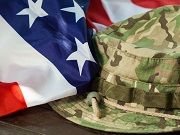Article
VA Calls For Additional Hepatitis C Funding In the 2017 Fiscal Year
Author(s):
An estimated 107,000 veterans are currently undiagnosed or untreated for HCV.

Despite record funding for hepatitis C treatment, the Department of Veterans Affairs (VA) is seeking another $1.5 billion to treat HCV-positive veterans, stating they were either undiagnosed or ignored in the past.
Over the past 2 years, more than $2 billion has been appropriated for new HCV drugs, allowing the VA to treat 65,000 veterans for the virus, according to Stars and Stripes. However, there are still approximately 87,000 vets who remain untreated, and an estimated 20,000 who are undiagnosed.
Although funding for the newest drug that has a high cure rate is a concern, it is not the biggest challenge treating hepatitis C. In reality, it is finding ways to help veterans who are unable or unwilling to be screened or treated for the virus.
There are multiple reasons why some veterans choose to decline treatment, or do not volunteer to be screened. According to David Ross, director of the VA HIV, Hepatitis and Public Health Pathogens Program, and Tom Berger, leader within Vietnam Veterans of America, some vets distrust the VA. Other reasons include concern with the stigma of hepatitis C, and drug use or fear of traditional drug treatment with severe side effects.
Furthermore, some of these veterans who are HCV positive suffer from substance abuse or mental illness, which can affect their ability to come in and take treatments reliably, Ross told Stars and Stripes. Ross suggests that the VA needs to increase its psychological or psychosocial care for these types of veterans.
HCV price tag concerns
Although there are bigger concerns now, at one point HCV care was about money. In 2013, Sovaldi came onto the market with cure rates around 90%, with few side effects. However, just 1 pill cost $1000, causing hesitation from insurers.
Physicians were encouraged to only reserve the drug for the direst cases. VA patients with a progressed stage of HCV were the only ones prescribed Sovaldi. Those who did not meet the criteria were redirected to Veterans Choice, a program where veterans see non-VA health care providers at the VA’s expense.
During this time, Berger put the fault on the VA choosing which veterans receive treatments, stating they were rationing care.
It was not until last March that the VA announced it would start treating all HCV patients with Sovaldi, regardless of a veteran’s age or the progression of the virus, reported Stars and Stripes. This was due to an increase in funding from Congress and discounted drug prices, which now runs $41,460 for a 12-week treatment — a discount of 47% from the wholesale cost.
Since 2014, approximately 92% of veterans who have been treated are cured. Ross stated that in order to continue treatments, continued funding is imperative.
According to Stars and Stripes, the budget request of $1.5 billion in fiscal 2017 would provide treatments for about 35,000 veterans. But with the current cost of treatment, it would cost more than $4.4 billion in taxpayer dollars to treat 107,000 veterans who are undiagnosed or untreated.
The group Vietnam Veterans of America plan to continue to advocate for funding for 2017, and in subsequent years, reported Stars and Stripes.
“If we get funds for 2018 and 2019, that will make a big dent,” Berger said in the report. “Provided that we can get folks to go in and get treated.”






